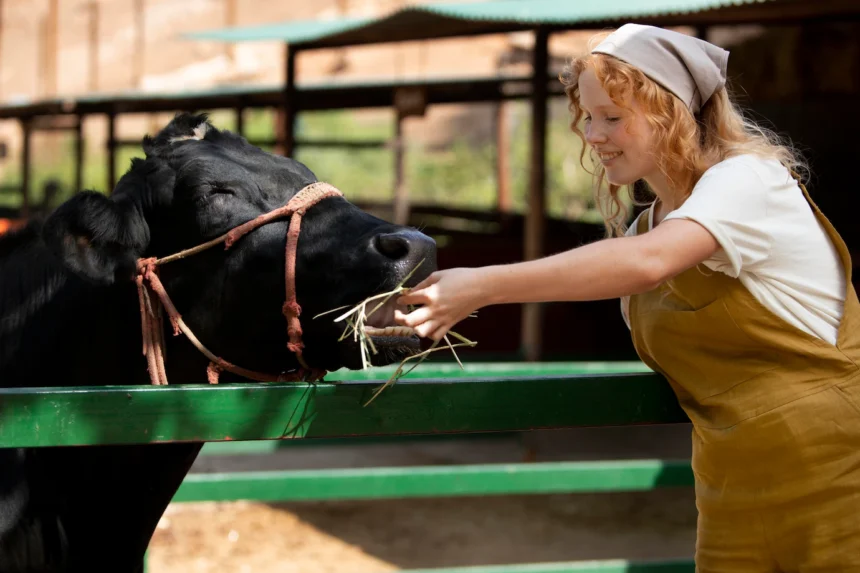Animal nutrition plays a crucial role in optimizing the health and performance of livestock. The art of animal nutrition involves understanding the nutritional requirements of different animal species and formulating diets that meet those requirements. By providing balanced and tailored feed, farmers and nutritionists can promote the overall well-being, productivity, and profitability of their livestock.
Here are some key considerations and practices involved in optimizing feed for livestock health and performance:
- Nutritional Requirements: Different animal species have specific nutritional needs based on their age, weight, stage of production (growth, reproduction, or maintenance), and physiological condition. Understanding these requirements is essential to formulate a diet that meets the animals’ needs.
- Energy Sources: Energy is a critical component of animal diets. It is usually provided through carbohydrates, fats, and proteins. The selection and inclusion of appropriate energy sources depend on the species, production goals, and available resources.
- Protein Quality: Protein is essential for growth, maintenance, and reproduction in animals. The quality of protein depends on its amino acid composition and digestibility. Balancing the amino acid profile and ensuring sufficient protein intake is vital for optimizing growth and performance.
- Essential Nutrients: Livestock also require various vitamins, minerals, and trace elements for their metabolic functions. These nutrients play crucial roles in bone development, immune function, reproduction, and overall health. Proper supplementation and fortification of feed with these essential nutrients are essential.
- Feed Formulation: Once the nutritional requirements and available ingredients are understood, feed formulation can begin. It involves calculating the appropriate proportions of energy sources, protein, minerals, and vitamins to meet the target nutrient specifications. Advanced computer software and mathematical models are often used for precise formulation.
- Feed Ingredients: The selection of feed ingredients depends on factors such as nutrient content, availability, cost, and palatability. Ingredients can include grains, oilseeds, forages, by-products, and mineral and vitamin supplements. Ensuring the quality and safety of ingredients is crucial to prevent contamination and maintain animal health.
- Feed Processing: The physical form of feed can impact its digestibility and utilization by animals. Grinding, pelleting, or extruding feed can improve nutrient availability and enhance digestibility, leading to improved performance.
- Feed Management: Proper feeding management practices are essential to ensure animals receive the right amount and quality of feed. This includes establishing feeding schedules, monitoring feed intake, and adjusting rations based on animal performance and nutritional requirements.
- Water Quality: Clean and adequate water supply is essential for livestock health and digestion. Water quality should be regularly monitored to prevent contamination and ensure optimal hydration.
- Feed Efficiency: Maximizing feed efficiency is a key objective in animal nutrition. It involves achieving the desired level of productivity while minimizing feed wastage and environmental impacts. Improving feed efficiency helps optimize resource utilization and reduces production costs.
Regular monitoring of animal performance, body condition, and health indicators is crucial to evaluate the effectiveness of the feed formulation and feeding practices. Adjustments can be made based on the observed results to continuously optimize the feed for livestock health and performance.
The art of animal nutrition involves a comprehensive understanding of the nutritional needs of different livestock species, careful formulation of balanced diets, and the implementation of effective feeding management practices. By optimizing feed, farmers can promote the well-being and productivity of their animals, leading to improved profitability and sustainable farming practices.
Join 'Farmers Mag' WhatsApp Channel
Get the latest Farming news and tips delivered straight to your WhatsApp
CLICK HERE TO JOIN






